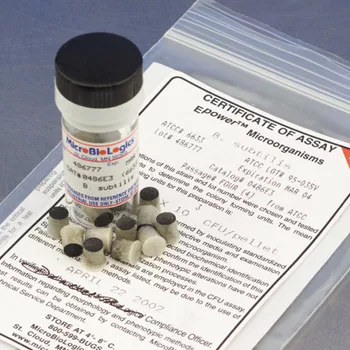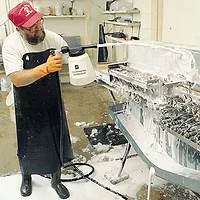14 QA Mistakes Made by Food Labs

The number one quality assurance (QA) mistake that food testing laboratories make is not having enough training for new employees, says Michael Brodsky, founder of Brodsky Consultants in Ontario, Canada, and a microbiologist with 26 years’ experience. He should know. For the last 15 years, Brodsky has hosted a popular workshop for technicians on the mistakes they make and how they can fix them.
These are the 14 mistakes Brodsky sees as the biggest concerns in quality assurance. How many of them are you making?
1. Labs offer no formal training for new staff. Most labs rely on a buddy system for training that has no consistency or reliability. If long-time staffers have any bad habits, they pass them on to the new people. Labs should develop structured new hire training programs that document exactly what they are required to learn.
2. Documentation of method SOPs are incomplete, lacking sufficient detail and have too many gaps. The people who write documentation make too many assumptions about users’ knowledge. An effective method document should be written in cookbook fashion, noting every detail in easy-to-follow steps.
3. Failing to adequately verify or document the verification of methods before adoption. Lab personnel assume that because a method is standardized or validated by the AOAC International, that’s enough. In reality, that’s only the first step. Labs also must verify that a method works in their environment and prove that the accepted performance characteristics can be repeated.
4. Failing to adhere to prescribed methods as written. It’s not uncommon for technicians to make modifications and take shortcuts in a process. That’s okay as long as they validate and document that the shortcut has no negative impact on results.
5. Failing to monitor the analytical competency of staff on an ongoing basis. If a method is introduced or modified the whole staff should receive training, and even staffers who’ve been with the company for years need regular measures of competency in lab methodology.
6. Failing to detail procedures for media preparation. There is too much reliance on “what’s on the label” and not enough on the specifics of each lab environment. Nuances, such as the dispensing volume, autoclave time requirements, etc., can impact results. Effective labs have their own processes laid out.
7. Failing to adopt a quantitative approach for evaluating the performance of agar media and establishing limits of acceptability. It is the performance of each batch media prepared in-house or lot of commercially acquired media needs to be assessed. Ideally, this should be done quantitatively to ensure acceptable limits for sensitivity and specificity.
8. Failing to verify performance of each lot of commercially prepared media or test kits. The foundation of a good quality assurance system is that it makes no assumptions without validation. You need established procedure to prove that media works before you use it.
9. Failing to include controls to monitor method performance on a daily basis, such as running a positive culture control through an entire process. This is like the final check for a process and it needs to be done daily.
10. Failing to establish a proper control system for reference cultures to ensure they retain their morphological, serological and phenotypic characteristics. How many times can you use a sub-culture before a reference culture loses key characteristics? Unless you measure on an ongoing basis, you lose reliability in your process.
11. Allowing unrestricted access to laboratory by non-laboratory personnel. Travel in and out of the lab increases the risk of environmental contamination. Access to the lab should be restricted to authorized staff, and when lab personnel bring in samples they should follow a strict set of protocols to eliminate the risk of tracking in contaminants.
12. Failing to minimizing the risk of laboratory cross-contamination of analytical samples. Labs need to conduct regular environmental monitoring to verify the efficacy of housekeeping and disinfection and to ensure the elimination of organisms of interest from the analytical environment.
13. Controlling who handles proficiency testing samples to ensure that such samples are processed only by the most experienced or technically competent analysts. When labs go through accreditation they use their most competent technicians, ensuring the best possible results. However, that’s not an accurate portrayal of the lab environment. The purpose of testing is to evaluate whether the lab is proficient in handling all of its samples, which means all staff should have equal opportunity to participate.
14. Making the erroneous assumption that accreditation is a guarantee of the veracity analytical results. Accreditation does not equal verification, it only establishes a baseline. You still need to verify that you consistently arrive at the same results.
You can address all of these issues in-house or work with a vendor, such as MicroBioLogics Inc., Brodsky says. MicroBioLogics is a leading producer of lyophilized microorganisms for quality control in microbiology laboratories worldwide, specializing in clinical, industrial, food, environmental and educational markets. “The advantage of MicroBioLogics is that it offers ease of use, added reliability and so many different materials that labs need.” The company has more than 3,000 items in the product line with more than 500 different lyophilized microorganism strains.
“In the long run,” Brodsky adds, “working with MicroBioLogics is probably more cost-effective and certainly simpler than doing the work in-house.”
microbiologics.com
Looking for quick answers on food safety topics?
Try Ask FSM, our new smart AI search tool.
Ask FSM →








